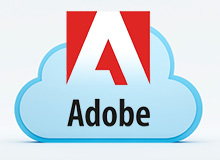Adobe, the leading software company targeting creative professionals, is exiting the shrink-wrap software business in favor of subscription-based software and online “cloud” services. While perhaps painful at first, the business model change will be ultimately beneficial for consumers and Adobe alike, and other software companies are likely to follow, say experts at Wharton.
On May 6, Adobe said it would stop developing its flagship Creative Suite, which includes applications such as Photoshop, in favor of Creative Cloud, a subscription-based service for software and updates. The company had been transitioning from a traditional software business model, which revolves around one-time product licensing, to subscription-based services, but decided to take a big plunge by removing the option for traditional licensing for new versions of the its popular creative tools. The move is an acknowledgement that software is rapidly transitioning toward collaboration, subscriptions and use on multiple platforms such as Apple’s iOS, Google’s Android, Mac OS and Microsoft’s Windows.
Wharton marketing professor Pinar Yildirim says that Adobe’s move is a positive one for consumers, who are increasingly mobile and don’t want to be tethered to a single desktop application. Customers also will benefit from regular updates and gain access to more features, she notes.
It’s a boon for Adobe, too. “With a cloud suite, product updates can be easily controlled and executed by the firm and for all consumers at once. This has cost-cutting benefits, such as not having to deal with customer service calls about a software version from five years ago, and operating with more efficient technology as it becomes available to improve consumers’ experience,” says Yildirim. “It is also easier to fix problems with a [cloud-delivered] product than dealing with bugs in individual copies of software.”
Reaction to Adobe’s move was mixed on Twitter. Many customers who bought the firm’s most recent Creative Suite 6 didn’t like the idea of paying a subscription for additional services and new features. Others cheered Adobe for making a big move.
Kendall Whitehouse, Knowledge at Wharton’s technology and media editor, attended the announcement at Adobe’s MAX conference this week and notes that, despite negative feedback from some quarters, the company’s move is likely to be emulated. “A number of customers will, I suspect, recoil at the notion that they will only be able to use the software as long as they continue to pay monthly subscription fees” as opposed to the perpetual license that Adobe offered with previous versions of Creative Suite, says Whitehouse. “But Adobe’s model for subscription-based software is likely the wave of the future. Expect to see more of this over time.”
Next in Line
On cue, SAP, one of the largest enterprise software companies in the world, announced on Tuesday that it plans to launch a cloud service for its fast-growing HANA analytics software. SAP, like its rival Oracle, has been moving away from a one-time licensing model and both firms have been acquiring cloud and software-as-a-service companies at a quick pace: SAP has acquired SuccessFactors and Ariba, while Oracle has acquired Taleo, RightNow and other cloud companies. In part, Oracle and SAP are buying companies to thwart emerging rivals like Salesforce.com and Workday.
According to David Wadhwani, senior vice president and general manager of digital media at Adobe, the move to support the year-old Creative Cloud is about focus and the ability to “put innovation in our members’ hands at a much faster pace.”
Wadhwani, speaking at a meeting with members of the press, said that Adobe “thought long and hard about this decision,” but noted that customers will be able to get enhancements on an ongoing basis, have access to the full range of Adobe’s creative tools and interact online with a community of peers. Adobe decided that the potential short-term revenue hit is worth the long-term gains. Switching to a model where customers pay recurring fees over time reduces the revenue received up front, but allows the company to better predict future revenue and earnings.
Adobe’s pricing highlights how the revenue equation will change. Access to Adobe’s Creative Cloud is $49.99 a month for all applications, $19.99 a month for a single application and $29.99 a month for existing Creative Suite customers. Adobe also has student and teacher editions and pricing plans for a team of users. Most plans are annual commitments billed monthly, so Adobe has predictable recurring revenue. For comparison, Adobe’s Creative Suite 6 costs $1,299 to $2,599, depending on the edition.
Yildirim says that the revenue risk to Adobe may not be dramatic since companies are taking their time evaluating large upfront technology purchases and could have been slow to upgrade to the latest Creative Suite. “Adobe is making a move to being a full-time service provider and selling access to products rather than [selling] products. That is a good move in today’s economy,” she notes. “I am in favor of subscription-based models for most content and knowledge-product providers. This is a way for them to defend their product and market share.”
Rebooting Its Model
According to Whitehouse, Adobe isn’t reinventing software architecture as much as rebooting its business model to one that revolves around subscriptions. “Much of the conversation about this move by Adobe conflates two related, but distinct, issues: the delivery of software applications as online, hosted ‘cloud-based’ services, and purchasing software on a subscription basis rather than with a one-time payment,” he says. “While Adobe’s Creative Cloud software contains online tools and services, what most consumers are paying for are the locally-installed desktop programs like Photoshop. In other words, this is more of a business model shift than an architectural change in the way the software works.”
Analysts, however, give Adobe credit for recognizing the switch to cloud computing and being decisive with a business model change. Adobe told analysts that it will have four million Creative Cloud users by 2015, and analysts such as Peter Goldmacher of Cowen and Co. agree that goal is attainable. In a research note, Goldmacher wrote that “this change in direction will catch on faster than most expect.” He added that Adobe’s installed base of 12.8 million Creative Suite users gives the firm plenty of customers to transition to a subscription model. Adobe estimates that the total market for creative professionals is about eight million, up from 6.7 million two years ago.
Other analysts are also supporting Adobe’s move. “The Creative Cloud is about providing a larger canvas for innovation, and it is clear [that] the future creative process is increasingly networked, collaborative and social,” said Macquarie analyst Brad Zelnick. “Our experience at [the MAX conference] validates Creative Cloud as far more than a purchasing or revenue model.”
If support for Adobe’s cloud transition sticks, other software vendors may quickly adapt. “As we are moving more into cloud-based offerings, similar models are likely to follow,” says Yildirim.



